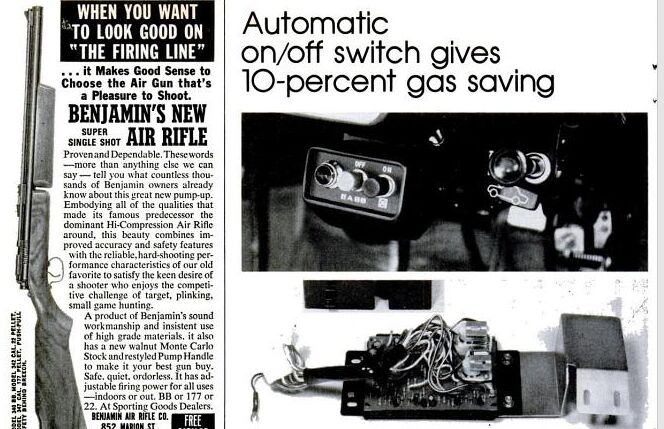Start-Stop System: Now Available On YOUR Smartphone – Or is It a Stop-start System?

Some forty years in the making, start-stop technology has arrived on your smartphone. Volkswagen launched an app that stops YouTube videos automatically when you look away from the screen. And it starts again, when you look back. The app uses facial recognition technology to capture when the viewer is looking away, only to resume when eyeballs are back on screen. PWHS (People With Heightened Sensitivities) will not like it: Averting your eyes during a shocking scene on YouTube won’t help anymore. The price of progress, I guess.
But what are the origins of this startling technology?
The 1974 pioneer, largely ignored
Start-stop technology has come a long, long, very long way. One of, maybe the first start-stop systems was invented by Toyota. In October 1974, the first oil crisis was in full swing, Bob Dunham reported in Popular Science and from Tokyo that “Toyota has developed an automatic engine stop-start system that is likely to become available as an option if fuel shortages continue.” The system would shut off the ignition if the car would be stopped for longer than 1.5 seconds. It was available on a six cylinder Toyota Crown, where it would “restart when the driver pushed out the clutch.” Four decades ago, the system gave the writer “10-percent better fuel economy,” along with a reduction of CO2 emissions, which “are highest when the engine is idling.”
In 1979, there was a second oil crisis. This one looked like it was here to stay. Volkswagen introduced a start-stop system in the early 80s, on the Volkswagen Santana and its sibling, the Passat. Volkswagen insisted on calling it a “Stop-Start-Anlage (SSA),” because first it stops the car, then it starts. The discussion about what comes first, the start or the stop, rages on until today.
Hand-operated early Volkswagen system – largely ignored
In the first iterations of the SSA, the engine had to be stopped with the push of a button. When gas and clutch were engaged, the engine did start. Later, it stopped automatically, like with the Toyota gizmo ten years before. The SSA did sound like a good idea, but it was rarely used. As a standalone option, it was nearly never ordered. Santana historian Tilman Grund thinks that by 1986, the SSA may have “existed only in the catalog.” People were scared to use it. The few that bought it did so as placebo sedative for the green conscience, but left it switched off. Not coincidentally, by 1986, oil prices were down to pre-1974 levels, and two golden decades of cheap black gold ensued, stunting the growth of the gizmo.
Zooming oil prices after the turn of the millennium, along with progress in electronics and mechanics, and the rising acceptance of hybrid systems helped the start-stop, stop-start, or idle stop systems become mainstream – despite its occasional critics. And now, it’s available on your phone. Where do you think the fortunes of the start-stop system and the futures of oil are going?

Bertel Schmitt comes back to journalism after taking a 35 year break in advertising and marketing. He ran and owned advertising agencies in Duesseldorf, Germany, and New York City. Volkswagen A.G. was Bertel's most important corporate account. Schmitt's advertising and marketing career touched many corners of the industry with a special focus on automotive products and services. Since 2004, he lives in Japan and China with his wife <a href="http://www.tomokoandbertel.com"> Tomoko </a>. Bertel Schmitt is a founding board member of the <a href="http://www.offshoresuperseries.com"> Offshore Super Series </a>, an American offshore powerboat racing organization. He is co-owner of the racing team Typhoon.
More by Bertel Schmitt
Latest Car Reviews
Read moreLatest Product Reviews
Read moreRecent Comments
- Ravenuer I see lots of Nissans where I live, Long Island, NY. Mostly suvs.
- ClipTheApex The latest iteration of the CRV is very handsome. Both CUVs have their mechanical and suspension challenges but in looking at interior & exterior design, I believe the CRV is much more tasteful. RAV4 seems a bit overwrought with way too many creases and bulges-- delivering a cohesive look. Just my opinion.
- Jbltg The more time passes, the more BMW's resemble Honda. zzzz
- VoGhost Doubling down on the sector that is shrinking (ICE). Typical Nissan.
- Dwford I don't think price is the real issue. Plenty of people buy $40-50k gas vehicles every year. It's the functionality. People are worried about range and the ability to easily and quickly recharge. Also, if you want to buy an EV these days, you are mostly limited to midsize 5 passenger crossovers. How about some body style variety??




































Comments
Join the conversation
Samsung has a similar feature on the new Galaxy S4 smartphone which they call "Smart Pause."
How 'bout having the car yell at you if it's in gear, moving along at at least 5 MPH, and you take your eyes off the windshield for more than two seconds? That'll still allow glances to the HVAC controls and radio, and checks over your shoulder for lane changes. Of course, given the number of people I've seen ignore the seat-belt warning chime, perhaps having a flyswatter descend rapidly from the headliner toward the side of the driver's head would be more effective.